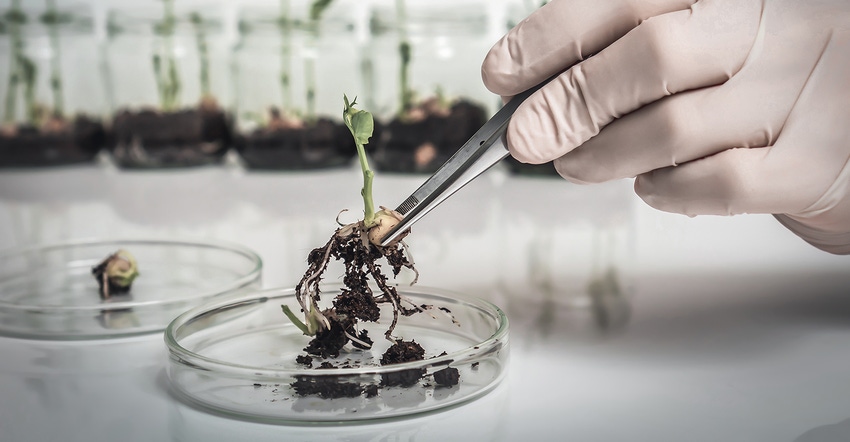With a growing population and hundreds of millions already suffering from hunger, genetic engineering could be necessary to feed the planet.

The world's population is expected to increase by 2 billion people in the next 30 years, from 7.7 billion currently to 9.7 billion in 2050, according to a United Nations report released in June 2019. And, according to a recent World Resources Institute (WRI) report, to feed a planet of nearly 10 billion in 2050, global food production strategies must adapt, including increased public investment in technologies such as genetic engineering.
“We have to increase yields dramatically, at an even higher rate than we�’ve done historically,” the report’s lead author, Tim Searchinger, wrote. “It’s got to be done by growing smarter.”
Meanwhile, even before accounting for such large population growth over the next 30 years, hunger on a global scale remains a key challenge today. According to the UN report “The State of Food Security and Nutrition in the World,” published in 2019, the number of people who suffer from hunger globally has slightly increased over the last five years. The report estimated more than 800 million people around the world suffer from hunger, and more than 2 billion people globally do not currently have access to safe, nutritious and sufficient food.
With that many people already suffering from insufficient food and nutrition, and the effects of climate change—droughts, flooding and fires, to name a few—looming larger than ever before, something must be done to ensure we not only feed the current population, but the expected future population as well.
That “something” could be further genetic engineering.
The debate surrounding genetically modified organisms (GMOs) in the food supply, according to the WRI report, largely centers on three primary crops: soy, corn and cotton. The genetic engineering of these crops has mainly consisted of resistance to the herbicide glyphosate and the production of a natural pesticide, the bacteria Bacillus thuringiensis (Bt).
However, the report noted debate surrounding these specific GMO foods should not dictate the use of further genetic engineering research.
“We do not believe that debate over these particular GM traits should dictate policy about the entire technology of genetic engineering,” the report stated. The authors referenced GMO “success stories,” such as GMO papaya saving the Hawaiian staple, and they said the same approach could be used on Ugandan potatoes, Brazilian soybeans and even Florida oranges.
For some, like Searchinger and Sarah Davidson Evanega, director of the Cornell Alliance for Science, looking to genetic engineering to help reduce hunger on a global level is a no-brainer.
“We have to use all the tools that we have at our disposal,” Evanega wrote. “Genetic engineering isn’t going to be the only tool, but it’s a good one. To not use it is like asking a plant breeder to use an abacus instead of a calculator.”
However, GMOs are not without their detractors. The Non-GMO Project is a non-governmental organization (NGO) dedicated to protecting a non-GMO food supply that works to educate consumers about the prevalence of GMOs and ensure such products are marked accordingly.
The general public also has yet to embrace GMO foods; a 2016 Pew Research poll showed just 37% of respondents believed GMO foods to be safe for consumption. At Natural Products Expo East and West shows, non-GMO-positioned offerings increased from 22 to 27% from 2015 to 2018, and foods with a non-GMO certification increased from 16 to 23%, according to proprietary NEXT data.
However, the WRI report stated, “regarding health effects, there is a scientific consensus that food safety does not justify rejecting genetic modification in general,” citing the scientific consensus that GMO foods pose no harm to human health.
Bill Freese, science policy analyst at the Center for Food Safety, also isn’t sure GMOs are the answer to the current—and looming—food crisis.
“It’s easy to say let’s throw the kitchen sink at the problem, but the reality is that you have to take account of successes or failures,” he wrote. “There are very limited public sector funds. At a certain point, we’ve got to say, ‘Should we really keep pursuing this?’”
The WRI report clarified GMOs are neither the skeleton key to solving the food crisis, nor something to be ignored completely; rather, genetic engineering has the ability to play a role in solving the issue.
“Four major related opportunities exist to increase crop yields through improved breeding: speeding up crop breeding cycles, marker-assisted and genomics-assisted breeding, improvement of ‘orphan’ crops, and genetic modification,” the report stated.”
While GMOs certainly present their share of related problems, which WRI acknowledged must be addressed, it is clear they could prove useful—if not outright necessary—in feeding the world both now and into the future.
As the report concluded, “The case for using this [genetic engineering] technology is compelling when the full range of potential gains and costs is taken into consideration.”
About the Author(s)
You May Also Like






.png?width=800&auto=webp&quality=80&disable=upscale)